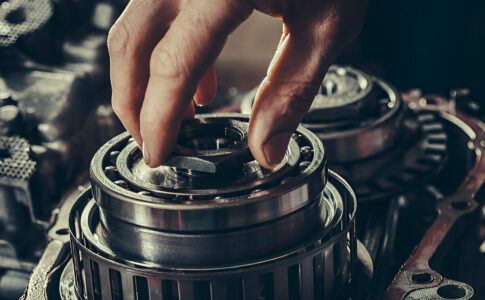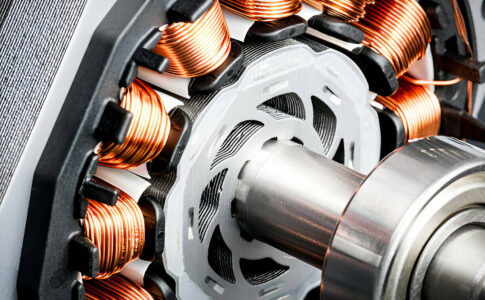Bearings are integral components of mechanical systems, reducing friction and facilitating smooth operation. When it comes to selecting the right bearing for your specific application, the options can seem overwhelming. The choice of bearing can impact performance, durability, and maintenance costs. This blog will guide you through the process of choosing the right type of bearing for your machinery.
Understanding Bearings: The Basics
Bearings are mechanical devices that allow rotational or linear movement while minimizing friction. They support load and provide the necessary smooth motion in machines, motors, and various other industrial applications. Bearings come in many types, each with specific features suited to particular functions. Understanding these types is the first step in making an informed decision.
Key Factors to Consider When Choosing Bearings
Before diving into the various types of bearings, there are some essential factors to consider to ensure that you choose the right one:
- Load Capacity: Bearings are designed to handle different types of loads. Some can handle radial loads, while others are designed to take axial or thrust loads. It’s crucial to know the type of load your system will experience.
- Speed: High-speed applications require bearings that are built to withstand the forces generated during rapid motion. Bearings like angular contact ball bearings or ceramic bearings are known for their ability to handle high speeds.
- Operating Environment: Bearings are exposed to different operating environments, including temperature extremes, moisture, and contaminants. In harsh environments, consider sealed bearings or bearings made from materials like stainless steel.
- Lubrication: Lubrication is essential to prolong bearing life and ensure smooth operation. Some bearings come pre-lubricated, while others require periodic maintenance and lubrication.
- Precision and Tolerance: Bearings that operate in high-precision environments, such as in motors or aerospace applications, must have tight tolerances and minimal play. Precision bearings are designed to meet these exacting standards.
Common Types of Bearings and Their Applications
- Ball Bearings
Ball bearings are among the most common types and are versatile in various applications. They are designed to handle radial and light axial loads. These bearings are found in motors, household appliances, and automotive applications. The most common subtypes include deep groove ball bearings and angular contact ball bearings, which are ideal for high-speed applications. - Roller Bearings
Roller bearings are used when higher load-carrying capacities are needed. They are designed to support heavier radial loads and are more robust than ball bearings. Types of roller bearings include cylindrical roller bearings, tapered roller bearings, and spherical roller bearings. - Needle Bearings
Needle bearings are a variation of roller bearings, but they have much smaller rollers, which makes them ideal for applications with limited space. These bearings are used in automotive gearboxes, power tools, and other compact machinery. - Thrust Bearings
Thrust bearings are designed to handle axial loads. These are most commonly found in automotive applications, such as in clutch assemblies, and in machinery where axial loads are predominant. - Ceramic Bearings
Ceramic bearings offer a significant advantage when it comes to handling high speeds, reducing friction, and offering better corrosion resistance than traditional steel bearings. They’re widely used in high-performance applications, such as in motorcycle engines, aerospace, and other demanding fields. - Magnetic Bearings
These bearings use magnetic fields to support the load instead of physical contact. As a result, they provide ultra-low friction and are used in applications where precision and performance are critical, such as in high-speed turbines and cryogenic systems.
How to Choose the Right Bearing for Your Application
To ensure optimal performance and longevity of your machinery, it’s essential to match the right bearing to your specific needs. Here are some tips for making the best choice:
- Evaluate the Load Type: Determine whether your machinery will experience radial, axial, or a combination of both types of loads. Use ball bearings for radial loads and thrust bearings for axial loads.
- Consider Operating Speed: If your application requires high-speed operation, opt for ceramic bearings or angular contact ball bearings due to their ability to handle high rotational speeds without excessive wear.
- Environmental Factors: For harsh environments, including extreme temperatures or exposure to moisture, select sealed bearings or those made from materials that resist corrosion, such as stainless steel bearings.
- Understand the Precision Requirement: If precision is crucial, for instance, in manufacturing or aerospace, you should consider precision bearings designed to handle minimal tolerance and ensure the smoothest operation.
- Maintenance Needs: Consider whether the bearings will require regular maintenance or if sealed bearings that come pre-lubricated are more appropriate for your application.
- Consult a Bearing Supplier: Reach out to bearing suppliers like Noormsons, who can offer expert advice and recommend the right type of bearing based on your application’s specific requirements.
Conclusion
Choosing the right bearing is essential to maintaining machinery performance, efficiency, and longevity. By considering factors like load capacity, speed, operating environment, and precision, you can make an informed decision about which type of bearing is best suited for your needs. Whether you’re selecting ball bearings, roller bearings, or ceramic bearings, understanding the specific requirements of your application will ensure that you get the most out of your equipment.
When in doubt, always consult with a trusted bearing supplier like Noormsons, who can offer personalized recommendations and expert guidance.





No comments